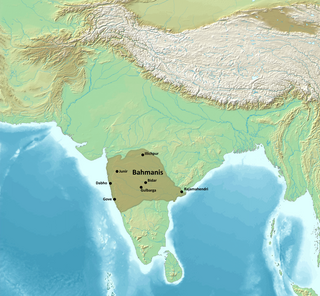
The Bahmani Sultanate was a late medieval Muslim empire that ruled the Deccan Plateau in South India. The Bahmani Sultanate came to power in 1347 during the Rebellion of Ismail Mukh against the Tughlaq dynasty of Delhi after Ismail Mukh abdicated in favour of Zafar Khan, who would establish the Bahmani Sultanate. The Bahmani Sultanate was in perpetual war with its neighbors, including its rival to the south, the Vijayanagara Empire.

Rama Raya was a statesman of the Vijayanagara Empire, the son-in-law of Emperor Krishna Deva Raya and the progenitor of the Aravidu dynasty of Vijayanagara Empire, the fourth and last dynasty of the empire. As a regent, he was the de facto ruler of the empire from 1542 to 1565, although legally the emperor during this period was Sadasiva Raya, who was merely a puppet ruler. Rama Raya was killed at the Battle of Talikota, after which the Vijayanagara Empire got fragmented into several semi-independent principalities paying only nominal allegiance to the empire.

Deva Raya I was a king of the Vijayanagara Empire. After Harihara II died, there was a dispute between his sons over succession, in which Deva Raya I eventually emerged victor. He was a very capable ruler noted for his military exploits and his support to irrigation works in his kingdom. He modernized the Vijayanagara army by improving the cavalry, employed skilled archers of the Turkic clans and raised the fighting capacity of his bowmen and imported horses from Arabia and Persia.
Veera Vijaya Bukka Raya was an emperor of the Vijayanagara Empire from the Sangama Dynasty.
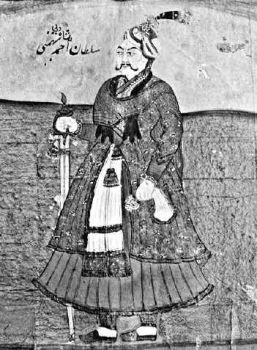
Ahmed Shah Al Wali Bahamani was the ruler of the Bahmani Sultanate from 1 October 1422 to 17 April 1436, and was a great patron of arts and culture. He brought Persian artisans from Iran, including the metal-worker Abdulla-bin-Kaiser, who was the master of Bidriware, the inlaying of zinc alloy with silver and gold.

Ala-ud-Din Hasan Bahman Shah whose original name was Zafar Khan or Hasan Gangu, was the founder of the Bahmani Sultanate.
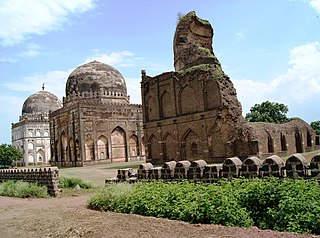
The Bahmani tombs complex at Bidar is the necropolis of the Bahmani dynasty, located in Bidar, in the Indian state of Karnataka.
The Turquoise Throne or Takht-i-Firoza was a famous jewel-studded royal throne of the Bahmani Sultans of Deccan in India. It was a gift by Musunuri Kapaya Nayaka, then king of Warangal, during the Bahmani-Vijayanagar War, where the Bahmanis defeated the latter. Over some time, this throne became one of the most important icons of the Bahmani royalty and heritage.

Alau’d-din Ahmad Shah was the tenth sultan of the Bahmani Sultanate. He was considered a benevolent ruler, albeit weak in administration. His reign is marked by rebellions.
Alauddin Humayun Shah Bahmani was the sultan of the Bahmani Sultanate, who reigned between 1458 and 1461. Also known as Humayun Shah Zalim, he is described as a cruel ruler, known for executing people in torturous ways.

The Bahmani–Vijayanagar war, also known as the First Bahmani–Vijayanagar War, spanning from 1362 to 1367, was a significant period of conflict between the Bahmani Sultanate and the Vijayanagar empire in Deccan India during the fourteenth and fifteenth centuries. It began due to disputes over the acceptance of coins in both states, with Bahmani ruler Muhammed Shah I banning Vijayanagar coins in his dominions. This move prompted Vijayanagar's Bukka Raya I to forge an alliance with Musunuri Nayakas, the then rulers of Warangal, Kanhayya, and local bankers, resulting in the destruction of Bahmani coins and the escalation of tensions leading to outright war. This was the first war in India where the Europeans fought at the Deccan and the infantry is used.

The Deccan Sultanates-Vijayanagara Conflicts were a prolonged period of military conflict lasting from 1495 to 1614 This series of battles pitted the rival powers of the Deccan Sultanates against the Vijayanagara Empire. Over the course of approximately 120 years, these two entities engaged in a series of wars and skirmishes that were marked by significant displays of military strength and strategic maneuvering.
The Bahmani–Vijayanagar War began with the Siege of Pangal, where Sultan Firuz Shah of the Bahmani Sultanate attempted to capture the fort. However, the Bahmani forces faced setbacks, including a disease outbreak among their ranks, leading to the failure of the siege. In response, Deva Raya I of the Vijayanagara Empire launched a successful counteroffensive, defeating Sultan Firuz Shah in a decisive battle. This victory dealt a significant blow to the Bahmani Sultanate, ultimately leading to Firuz Shah's demise and further weakening of his empire.
Bahmani–Vijayanagar War may refer to:

The Bahmani–Vijayanagar War (1398) of 1398 marked the military conflicts between the Bahmani Sultanate under Tajuddin Firuz Shah and the Vijayanagar empire under Harihara II. After the initial Bahmani-Vijayanagar War in 1367, the two kingdoms enjoyed a period of peace for thirty years. However, in the late fourteenth century, they once again found themselves engaged in major warfare in the Deccan region.

The War of the Goldsmith's Daughter or the Bahmani–Vijayanagar War of 1406 was a significant conflict between the Bahmani Sultanate and the Vijayanagar Empire, the two primary powers in the Deccan region of thirteenth and fourteenth century India, occurring in 1406. Led by Tajuddin Firuz Shah, the Bahmani forces, supported by Velama chiefs and the Reddis, launched multiple attacks on the Vijayanagar empire under the rule of Deva Raya I. Despite initial resistance, Deva Raya faced heavy casualties, ultimately compelling him to accept the terms imposed by the Bahmanis. As a result, the Vijayanagar ruler pursued peace, resulting in victory for the Bahmanis.
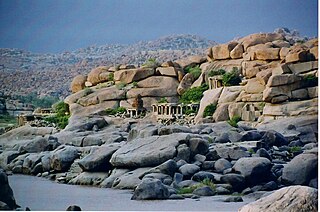
The Siege of Vijayanagar was a military campaign by the Bahmani Sultanate, led by Ahmad Shah I Wali, against the Vijayanagar empire, ruled by Vira Vijaya Bukka Raya III, beginning in 1423 in present-day Karnataka. The campaign resulted in a victory for the Bahmanis, leading to the recapture of all territories that had fallen into the hands of Vijayanagar during the war of 1420.
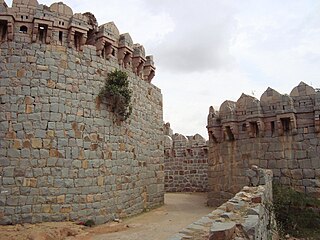
The Bahmani–Vijayanagar War of 1443 marked as the last war between the Bahmani Sultanate of Deccan India and the Vijayanagara empire of South India. It commenced between the Bahmanis under Alauddin Ahmad Shah and the Vijayanagar under Deva Raya II, taking place in present-day Mudgal, Karnataka. During the course of two months, three battles unfolded, with the Vijayanagara forces initially securing victory, followed by two subsequent wins by the Bahmanis. These defeats compelled the Vijayanagara ruler to seek peace, agreeing to pay tribute to the Bahmanis.
During the 1370s, the Vijayanagara Empire, under the reign of Bukka Raya I, faced renewed conflict with the Bahmani Sultanate, stemming from past territorial disputes. After a period of relative calm following previous military campaigns, tensions resurfaced when Mujahid, the Sultan of Gulbarga, demanded the surrender of forts and territories in the Doab region. Bukka, unwilling to concede, asserted his claim over the disputed territories.













